Restoring A Mid Century Modern Architectual Masterpiece in Southern California
Mid Century Modern Living room at the Philmer J. Ellerbroek Residence in Tustin, CA.
Mid Century Modern Living room at the Philmer J. Ellerbroek Residence in Tustin, CA.
We were so excited to be chosen by the homeowners to assist with the interior design, remodel and restoration of their Mid Century modern home in the Mesa Verde area of Costa Mesa, CA. The homeowners purchased a beautiful Mid Century modern home that had been previously remodeled in the early 2000’s. It was their dream to have an original mid century modern home and they had the vision to bring it back to its original glory.
They wanted a home that would be open with tons of natural light and would fit their busy lifestyle with two small active boys but still keeping the style and feel of an original mid century modern design. Their desire was to fill the home with a mix of vintage original and mid-century modern furniture.
“We were thrilled to find the original terrazzo floors underneath the hardwood”
The Modern Vault
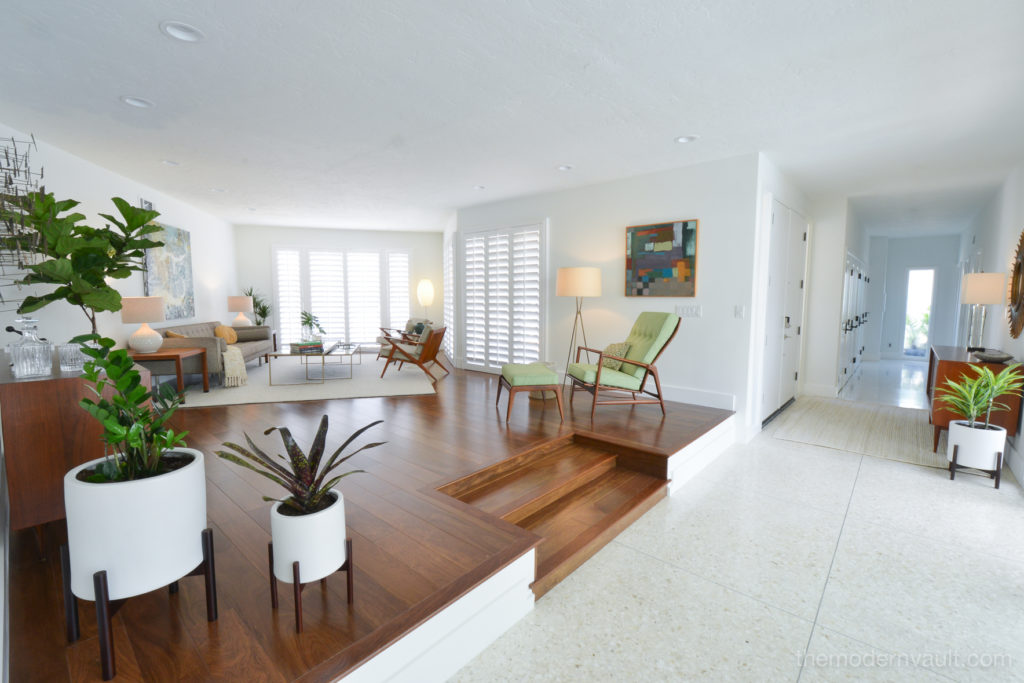
In keeping with period-correct flooring, the owners really wanted terrazzo floors in the home and were seriously considering investing in new, but when we started the project and the old cherry wood floors were removed, we were thrilled to discover the original terrazzo floors and fireplace surrounds were all intact and in good condition underneath the existing framing and flooring.
“Thank you so much, you were crucial to the success of this project”
Homeowners
As you can see from the before and after photos, there was a great deal of demolition. We removed the old wet bar and wall, opened up kitchen area and old formal dining room to reveal a new, open family/great room with plenty of room for a large 8 person table, a must for the homeowners who have a large extended family and love to gather around the dinner table.
The fireplace was covered with handmade tiles from Mission Tile in Newport Beach, stacked horizontally to maintain the look of an original tiled fireplace. A structural beam was added and engineering was necessary to open up both rooms, and it was finished in the same tones as the new wood flooring in the family room to add continuity and offer a smooth transition into each space. We sourced the chandelier locally and is vintage brass and hand blown glass. The original terrazzo floors were cleaned and polished and look amazing with the oval marble dining table and Hans Wegner Wishbone Chairs. A vintage Milo Baughman walnut credenza from our showroom leads to the powder room. Keep reading for more on that amazing transformation!
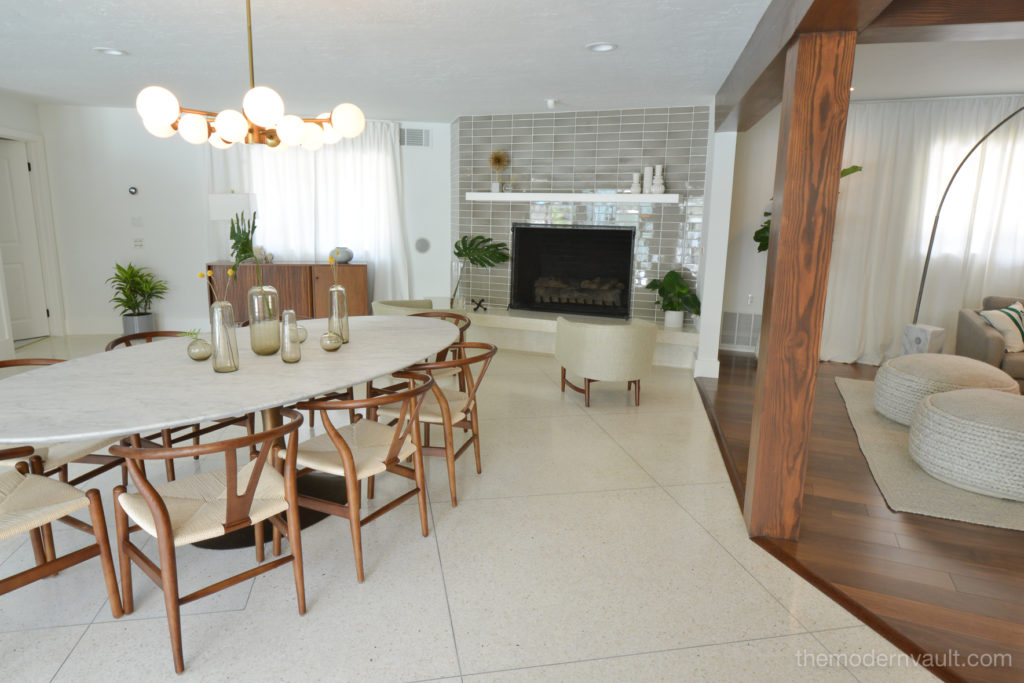
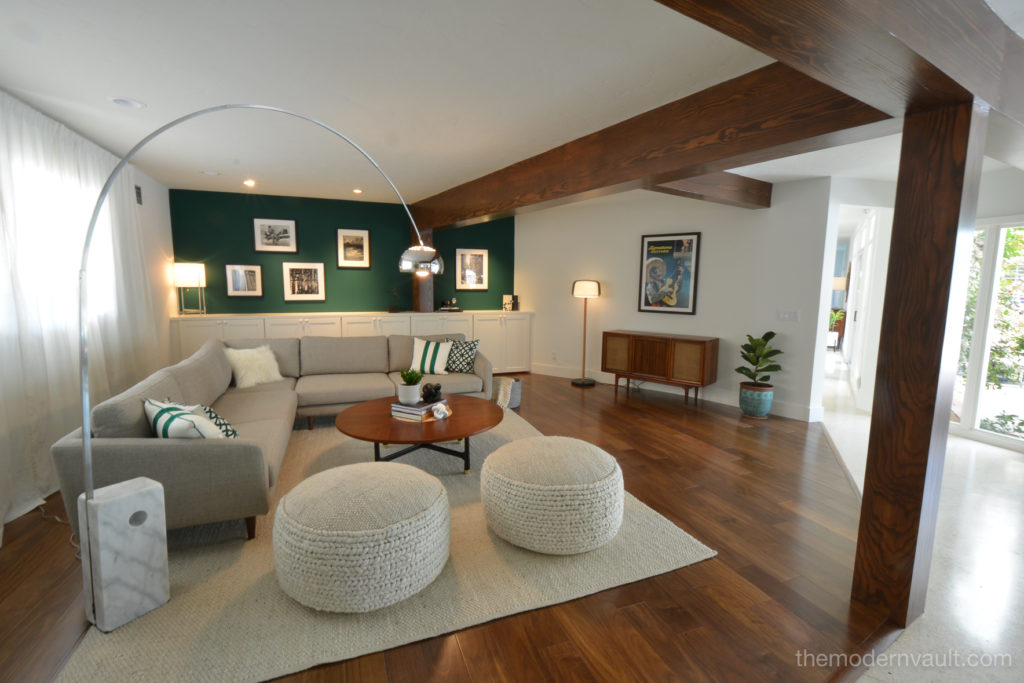
The new, super cozy and relaxed family room was furnished with a custom sofa and a vintage coffee table with terrazzo inlay by Harvey Probber. A great addition to the space was an original vintage record player with a working stereo and vintage Mexican guitar poster hangs above the cabinet. The clients wanted their young children to enjoy their large vinyl collection together. The green wall (Dunn-Edwards Billiard Table Green) was a last minute decision, but we love how it turned out and it ties in with the green color accents throughout the home. The original vintage black and white photographs are from a local photographer, Jerry Muller who did work in both New York City and Orange County in the 50’s-80’s. We sourced these from our own private collection.
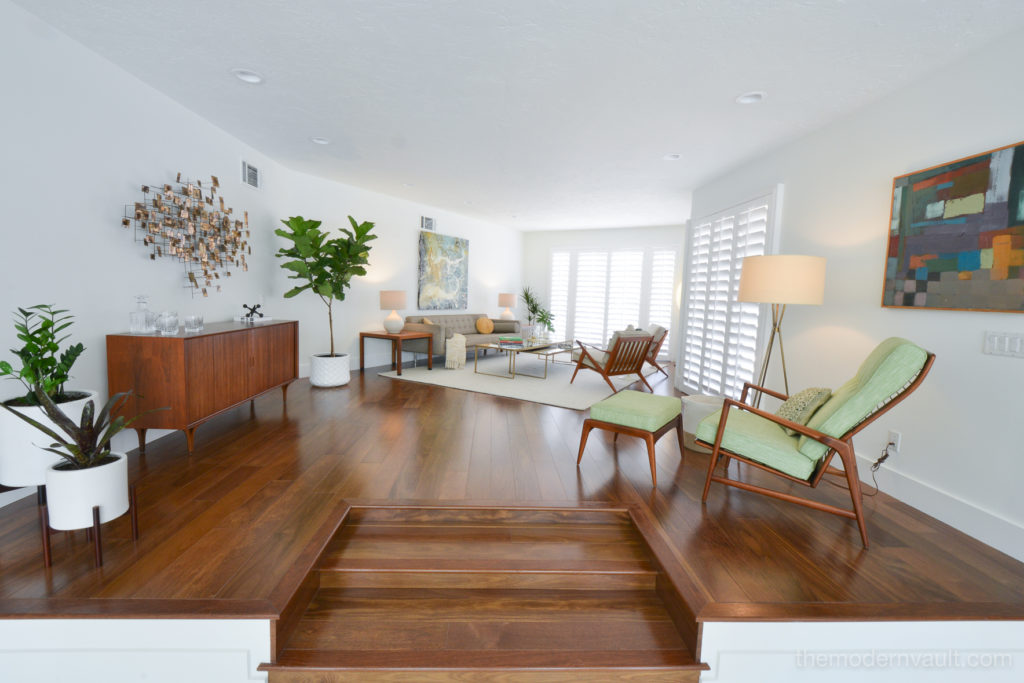
In the formal entry and raised greeting room, we added several vintage original pieces including a pair of Poul Jensen for Selig Z chairs in custom upholstery, a vintage I.B. Kofod-Larsen recliner, vintage brass tripod floor lamp and an original George Nelson for Howard Miller cigar bubble lamp to add some height in the corner. The sofa is a vintage Florence Knoll style sofa with walnut side tables by Directional. Over the bar is a vintage brutalist style brass wall sculpture and the bar is a tambour door walnut credenza by Robert Baron for Glenn of California. TheAbstract art over the chair is vintage.
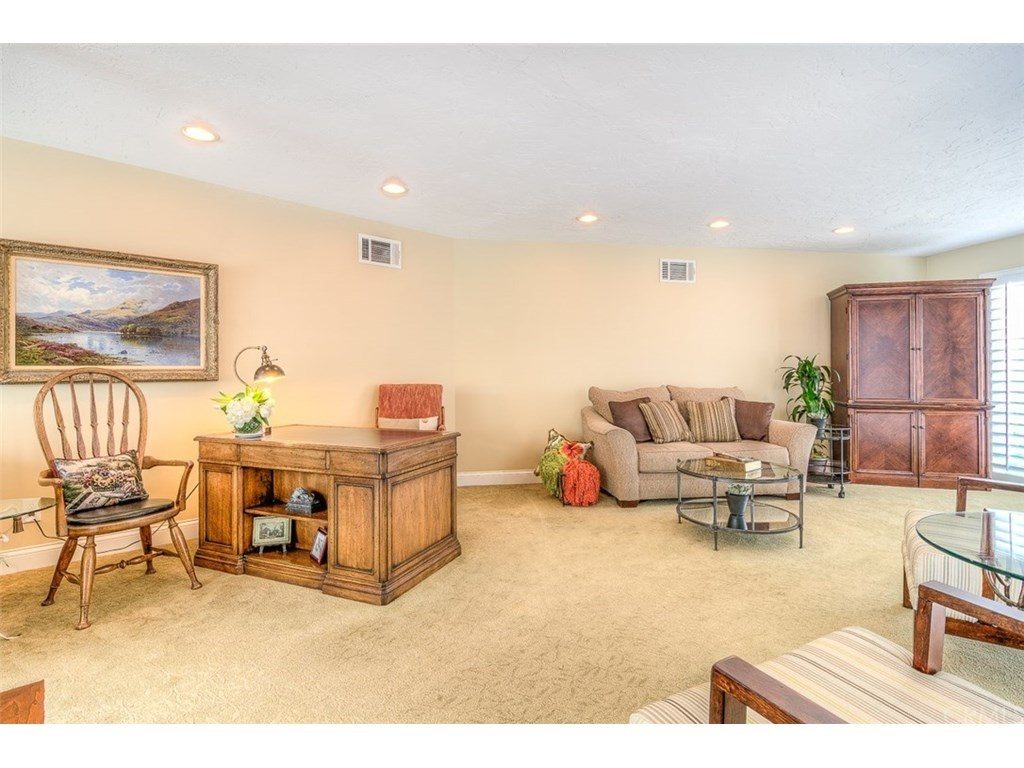

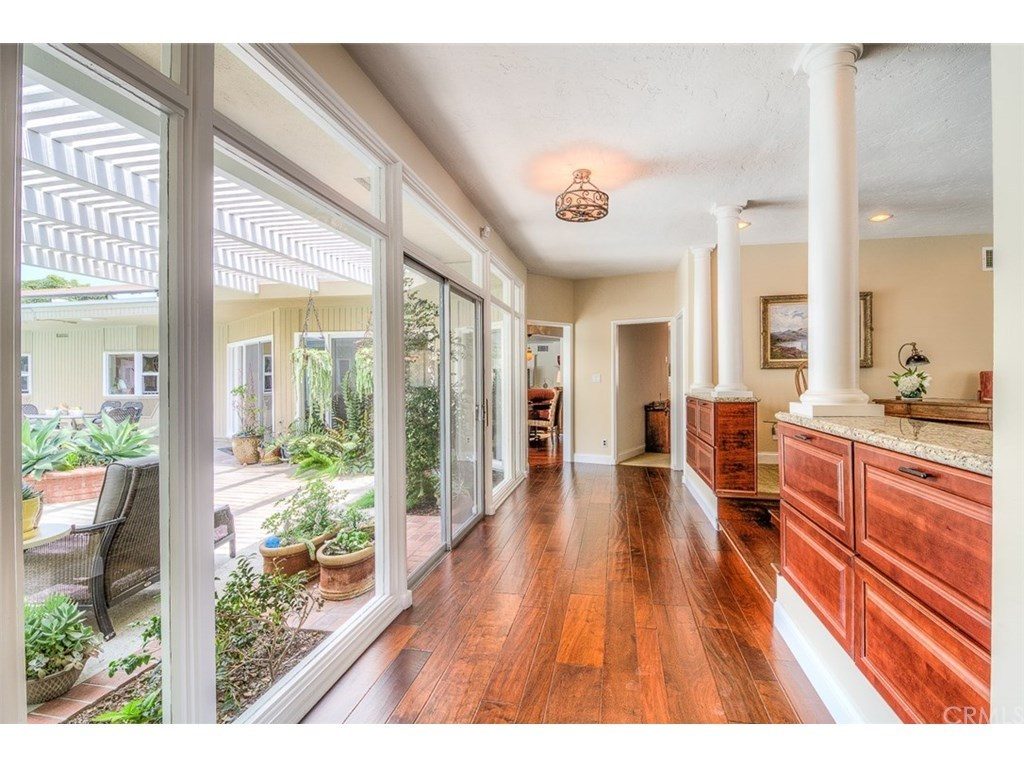
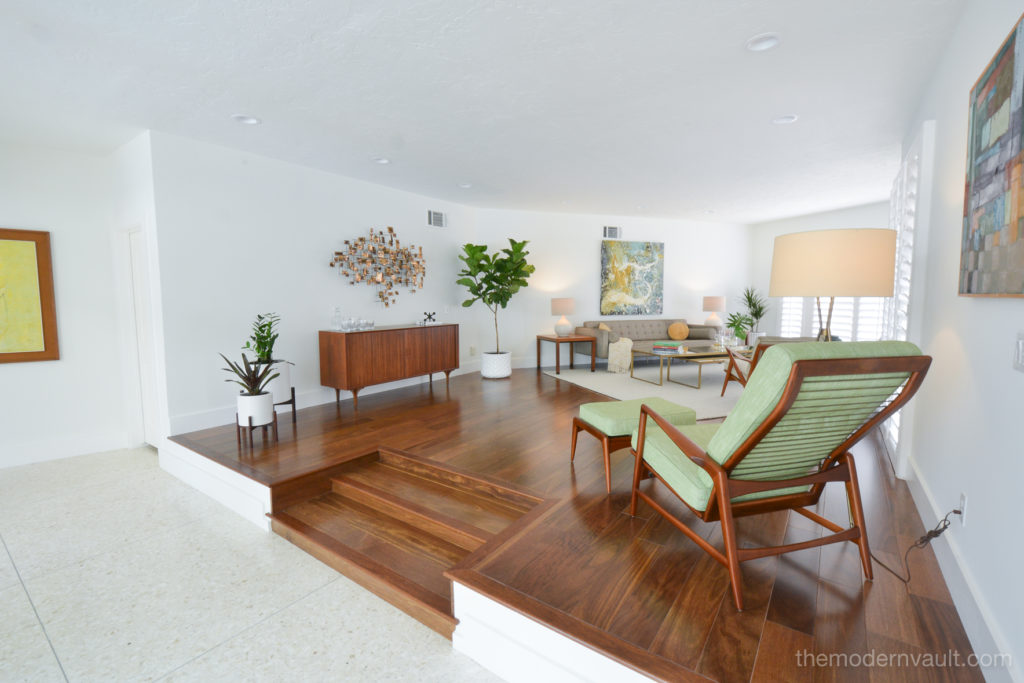
Probably the biggest transformation in the remodel was the powder room, located off of the kitchen and dining area. It had a shower, which was obviously added after the original home was built and it was dark and drab and didn’t serve much of a purpose. This room needed something fabulous, so we decided to add a custom emerald green herringbone tile backsplash and repurpose a vintage Kipp Stewart Walnut Credenza and use it as a vanity. We added a white granite countertop with a Kohler above counter sink and vintage inspired brass hardware. The beautiful brass pendant lights and oversize brass mirror add some glamour to an otherwise dark space. Hexagonal granite-look tiles were selected for the floors for an elegant touch.
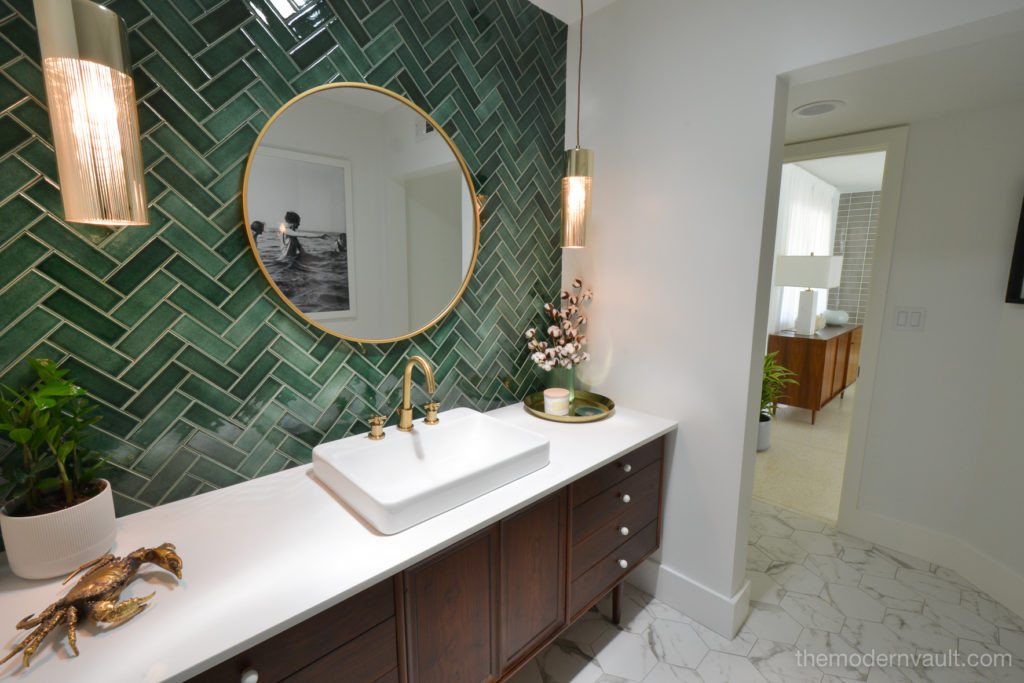
Here’s a great example of how to turn a not so functional space into something you and your guests will absolutely love!
The homeowners are thrilled with the finished result and will be able to enjoy their beautiful mid century modern home for many years to come. Scroll through the before and after photos of the project for some amazing transformations! If you have a vintage or mid-century modern remodel or restoration project here in Orange County and are looking for a trusted source for authentic mid century modern furnishings, restoration and interior design, give us a call and we will schedule a site visit at your convenience.
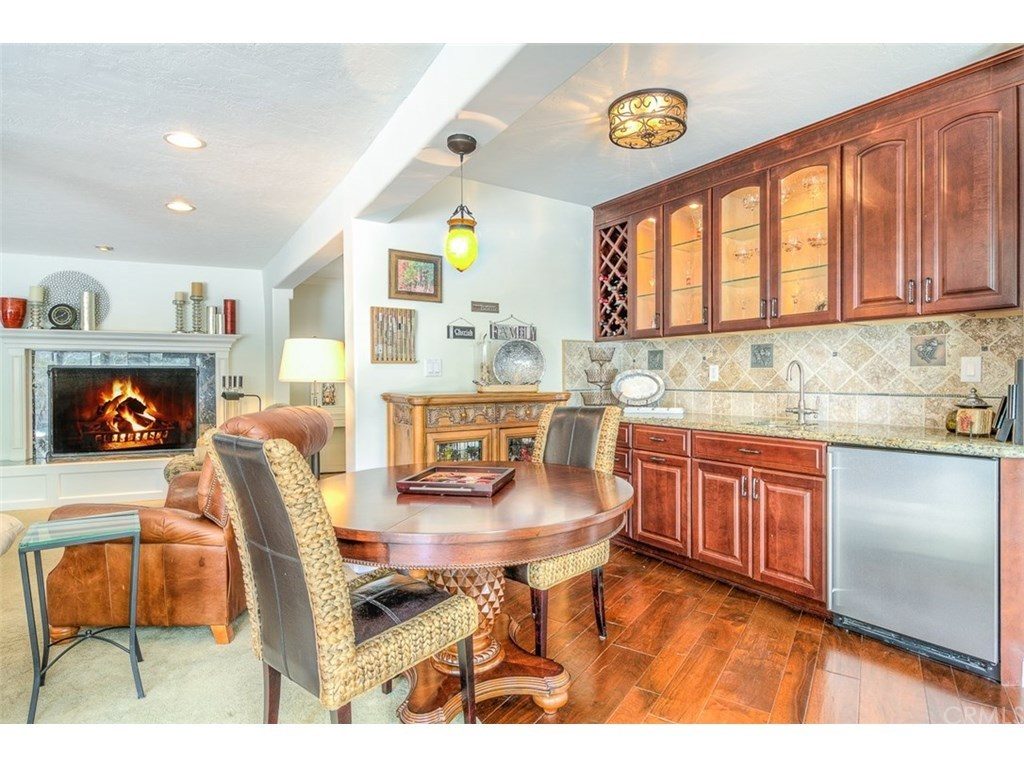
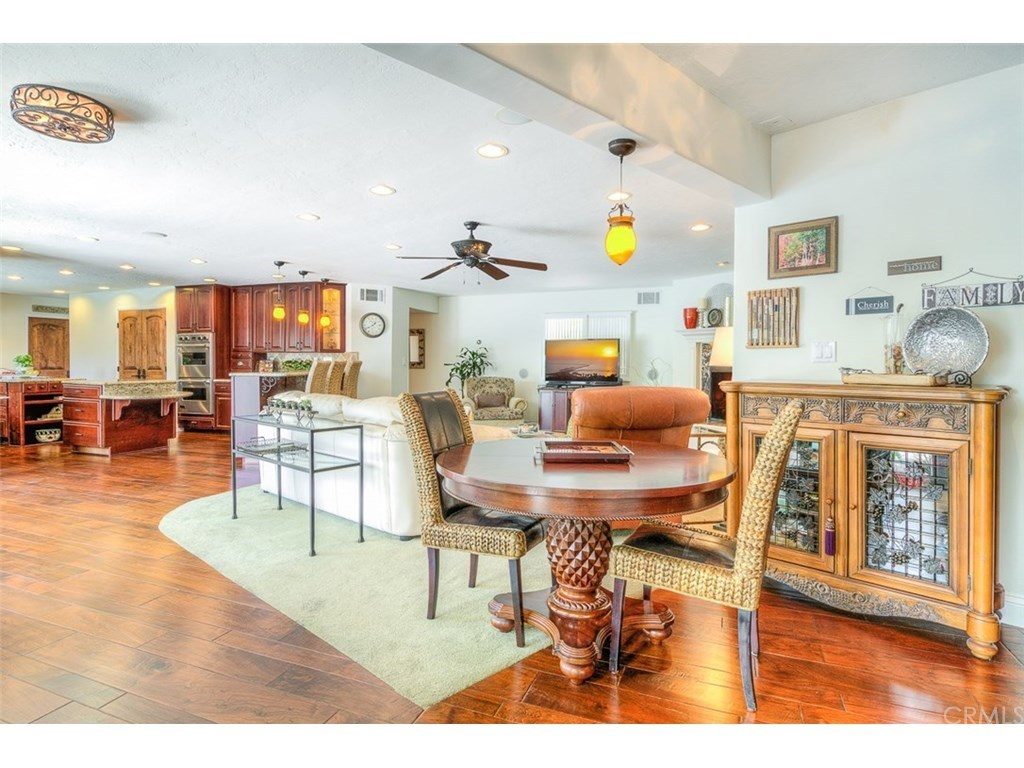
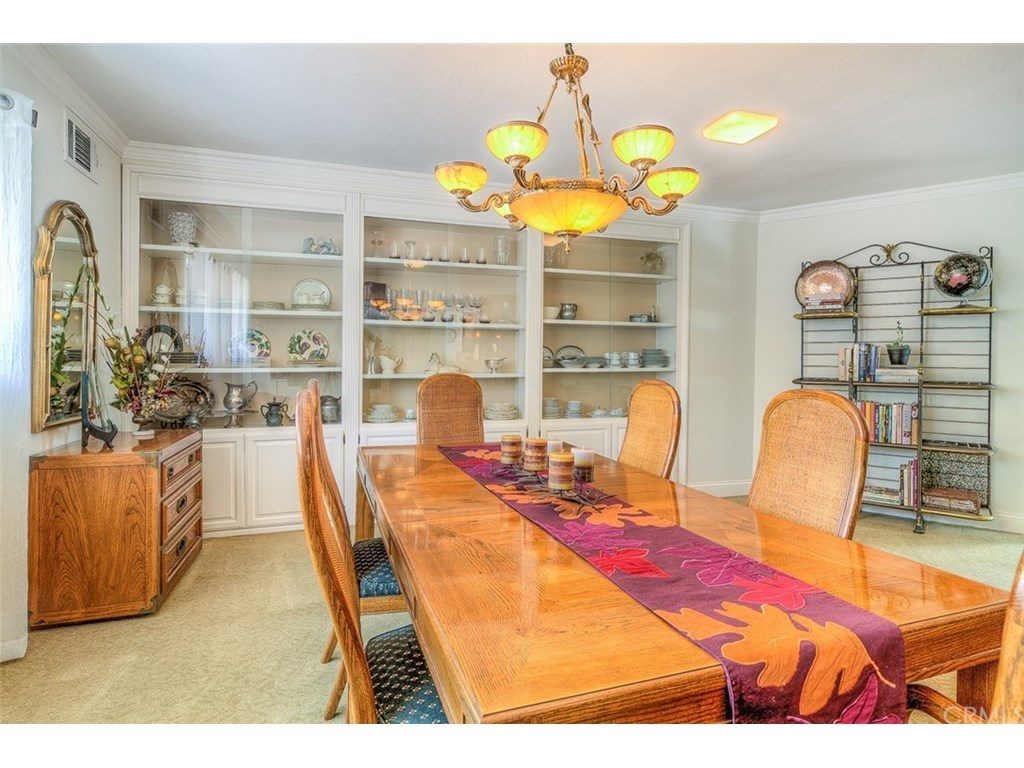


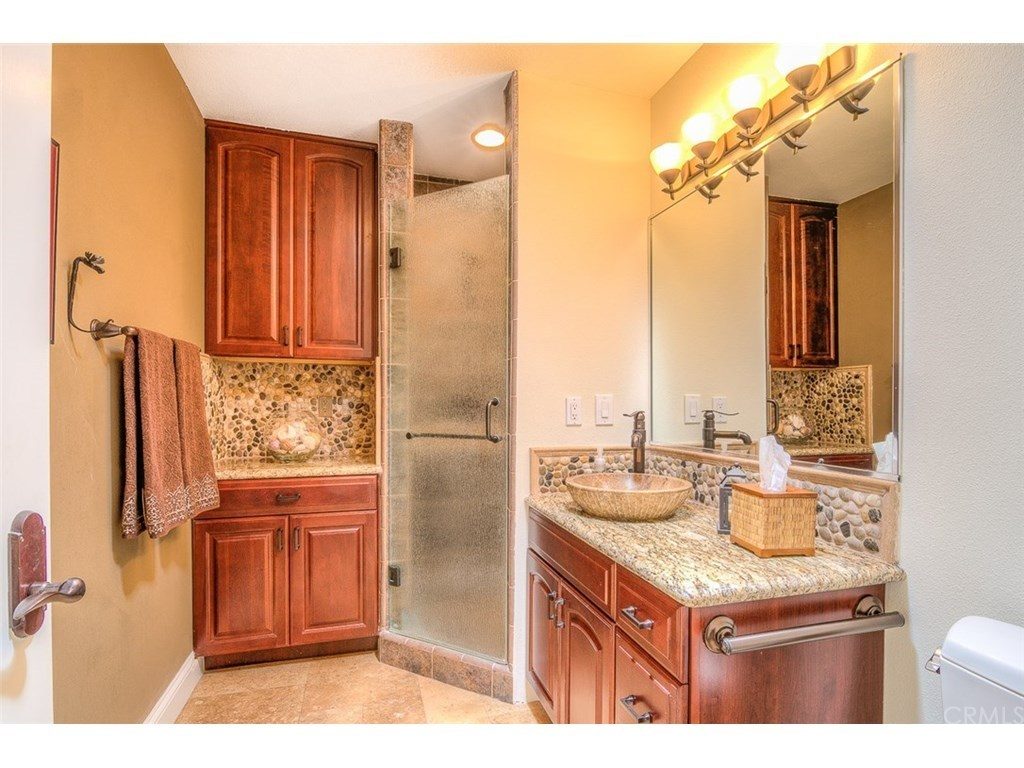
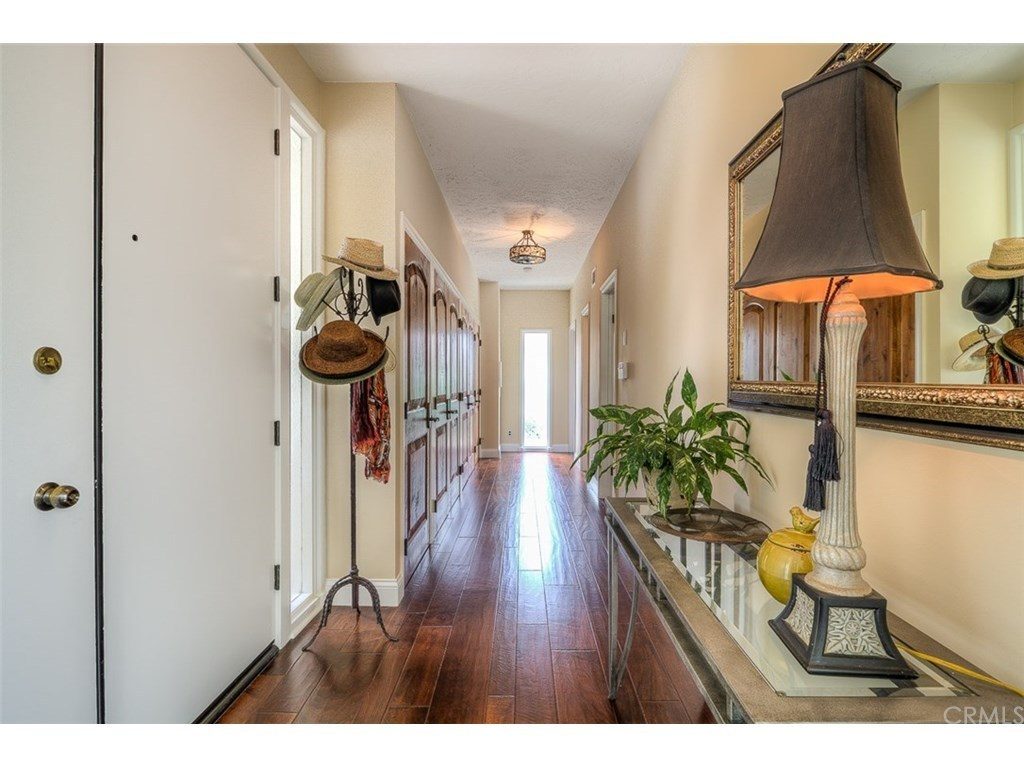
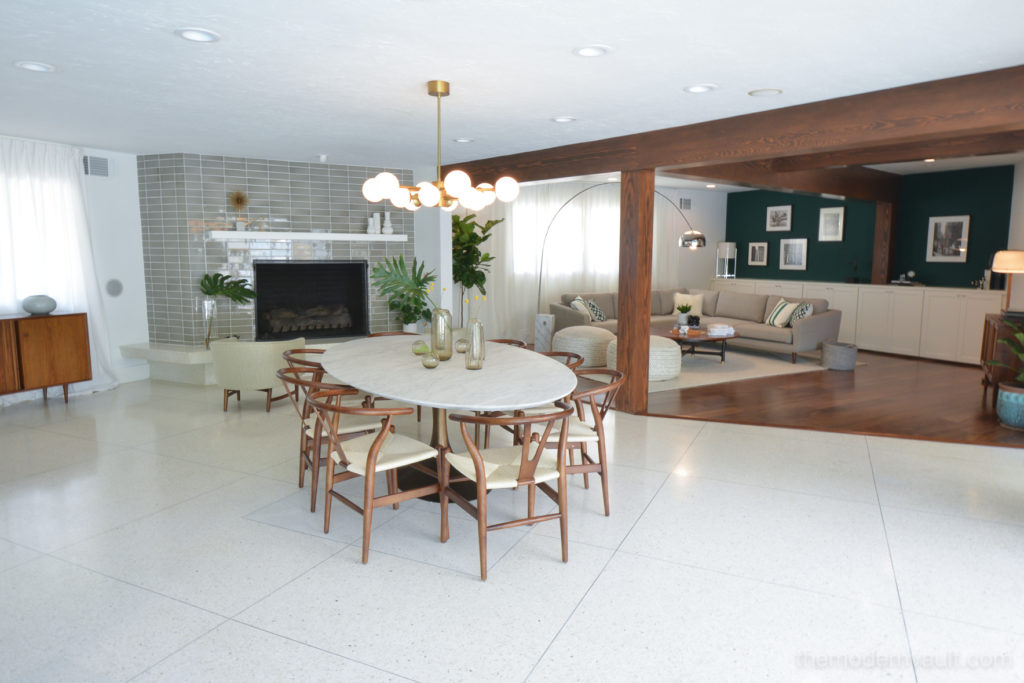

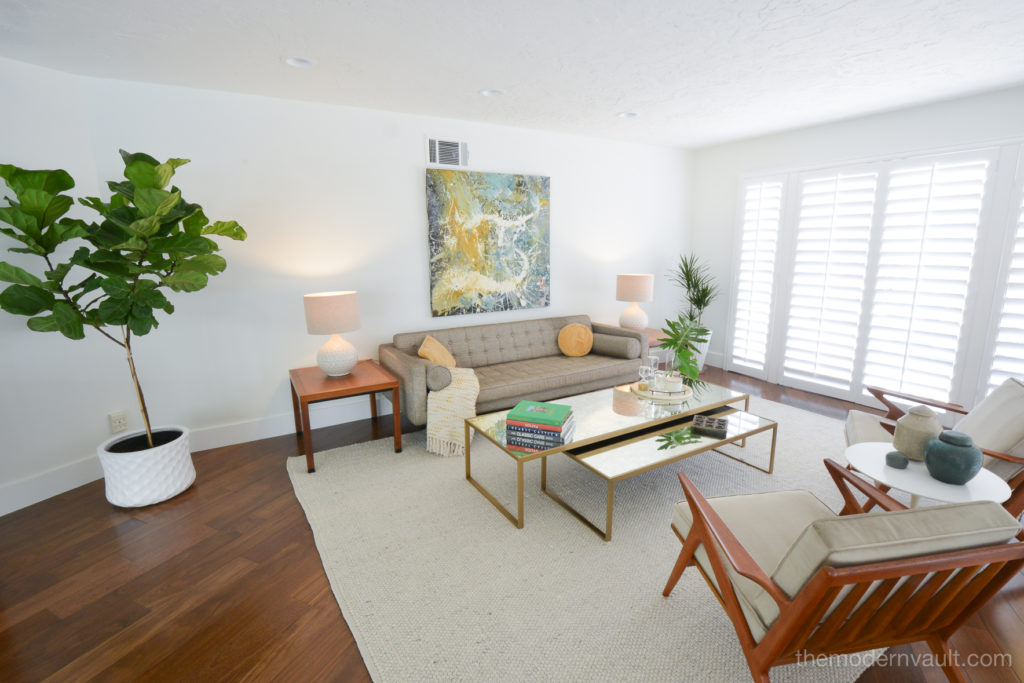


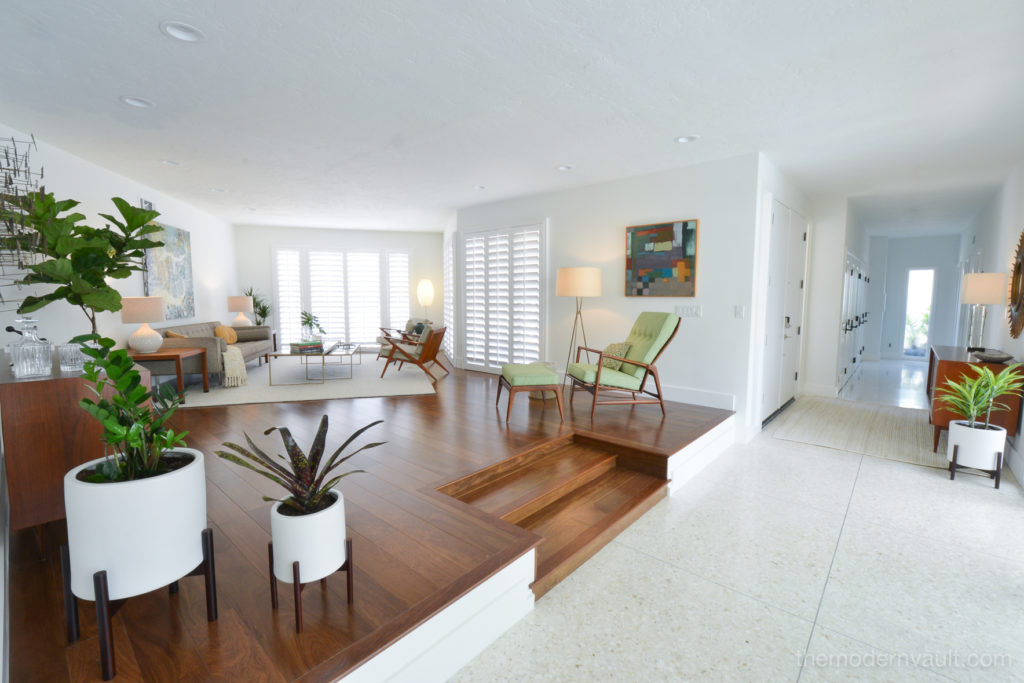
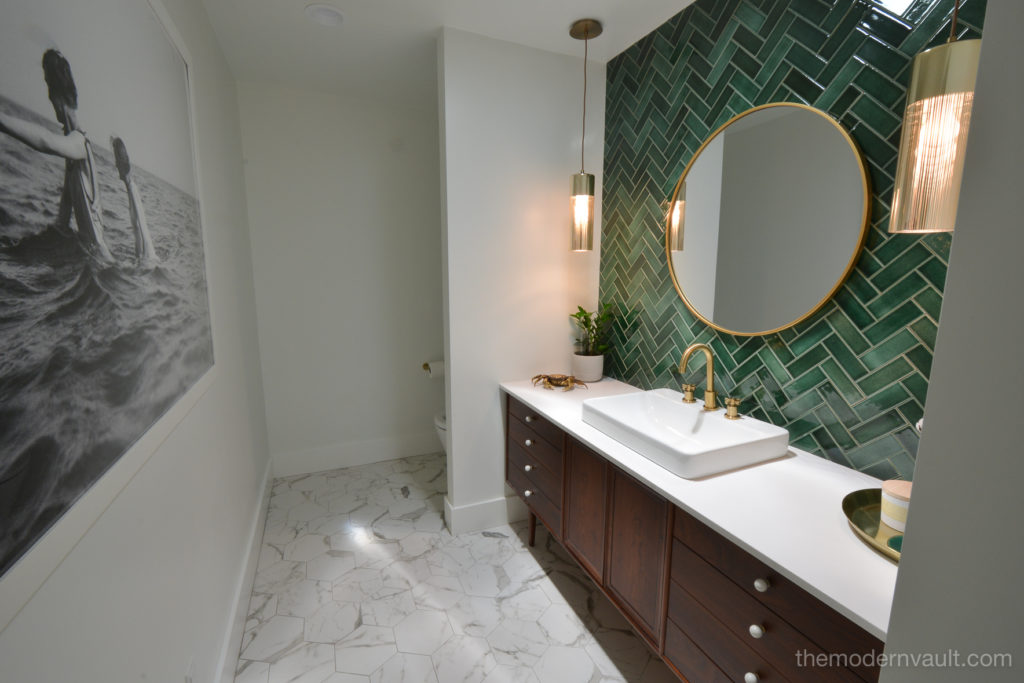
Among Danish furniture designers, Hans J. Wegner (1914-2007) is considered one of the most creative, innovative and prolific. Often referred to as the master of the chair, Wegner designed more than 500 chairs in his lifetime – many of them considered masterpieces. Best known as ‘the Master of the Chairs,’ Wegner created fascinating modern furniture that was both innovative and experimental. He was a furniture designer and a modernist that emphasized the practicality and uniqueness in each piece that he crafted. He believed the versatility and functionality of his designs were as vital as the aesthetic of them, which is visible in every Hans Wegner furniture piece.
![]() Iconic Papa Bear Chair and Ottoman
Iconic Papa Bear Chair and Ottoman
Born in Tønder, a southern Denmark town, Wegner discovered he had a talent in woodworking at an early age. While apprenticing at H.F. Stahlberg, Wegner designed his first chair at the age of 17 in 1931. When he visited Copenhagen to fulfill his military service, Wegner saw the annual exhibitions of the Copenhagen Cabinetmakers’ Guild, a trade exhibition where some of the best carpenters and architects of the time got invited, and realized that he needed to improve his skills considerably before he could open his own workshop.
Wegner was part of the spectacular generation that created, what is today referred to as ‘the Golden Age’ of modern Danish design. “Many foreigners have asked me how we made the Danish style,” Wegner once said. “And I’ve answered that it was rather a continuous process of purification, and for me of simplification, to cut down to the simplest possible elements of four legs, a seat, and combined top rail and armrest.”
The core of Wegner’s legacy is his focus on bringing the inner workings – the soul – of the furniture to the exterior, where the simplicity and functionality can be appreciated.
The son of a cobbler, Wegner was born in 1914 in Tønder, a town in southern Denmark. He began his apprenticeship with Danish master cabinetmaker H. F. Stahlberg when he was just 14 years old. Three years later he moved to Copenhagen and attended the School of Arts and Crafts from 1936 to 1938 before setting out as a designer.
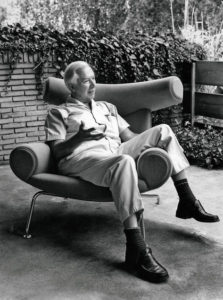
He decided to attend the School of Arts and Crafts in 1936. In 1940, Wegner joined architects and designers Arne Jacobsen and Erik Møller in Aarhus, working on furniture design for the new Aarhus City Hall. That same year, Wegner began collaborating with master cabinetmaker Johannes Hansen, who was a driving force in bringing new furniture design to the Danish public. This experience motivated Wegner to open his office in 1943 and start designing home furniture and some office pieces in which he utilized measurement studies and dimensional analysis to create. Historic furniture styles including the English Windsor chair, rustic American Shaker furniture, and 17th Century Chinese chairs were part of his influences and inspiration. A few of his most iconic and desired chairs are the CH24, also known as the Wishbone Chair, the Flag Halyard Chair, the Circle Chair and the iconic Papa Bear Chair. The original vintage versions of these chairs are highly coveted and by designers and collectors.
Circle Chair (Left), Flag Halyard Chair (Center), CH24 Wishbone Chair (Right)
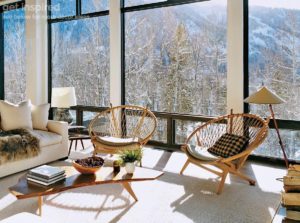
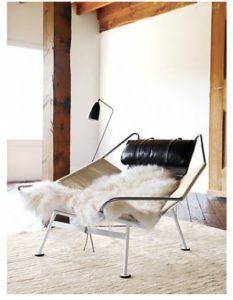
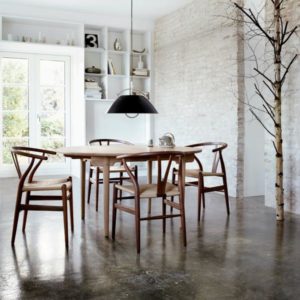
Ludwig Mies van der Rohe was one of the greatest architects of the 20th century. His amazing philosophy of open space and clean surfaces, combined with Bauhaus school, made his buildings one of the most elegant constructions of post-World War I. He was usually addressed just as Mies. Mies firmly stood behind his opinions and did not compromise for the sake of quiet negotiation. Because of his opinionated and passionate nature, we now have amazing monumental houses and buildings, such as Barcelona Pavilion, Farnsworth House, S. R. Crown Hall and his famous chairs of Bauhaus design.
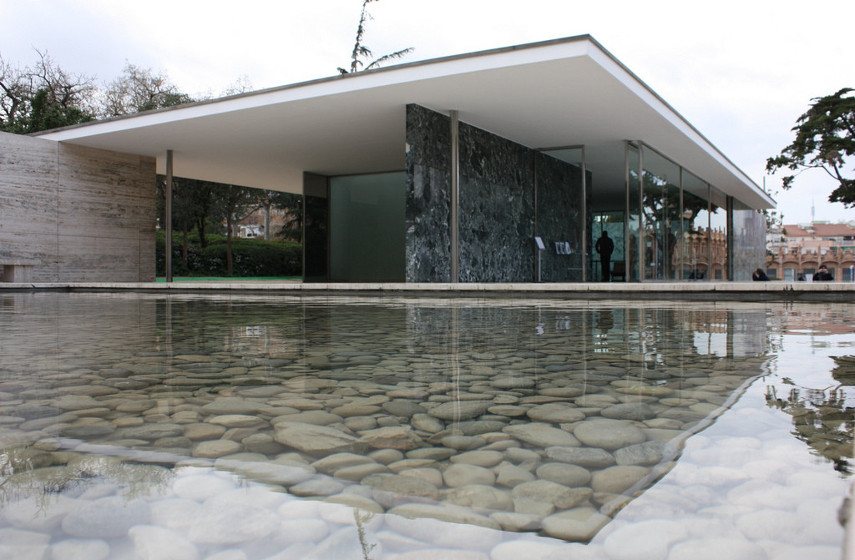
Mies van der Rohe was born in Aachen, Germany in 1886. Since he was just a boy he started expressing his affinities towards creative arts and construction. He worked with his father in their family stone-carving workshop. His next job was in Berlin, where he worked in interior design, before pursuing architecture. Mies was an apprentice in the studio of Peter Behrens for four years. Being a part of architectural studio gave him an opportunity to be exposed and to stay informed about theory, practice and trends in German architecture. His talent was quickly recognized and he started working individually. First, it was just about redesigning houses, next came the larger projects. Quickly adapting to new challenges, he simultaneously wanted to adapt to new social circles he was in. He took his mother’s last name Rohe and gave himself a title van der. He renovated aristocratic houses in Germany, sticking to the modern form of the purity and openness. The elements had to be simple and cubic. There was no room for complex, messy and piled up details. He disliked ornaments, irrelevant to the functionality and pure relationship between men and nature.
Barcelona furniture is the great example how Mies Rohe look on interior complements the exterior
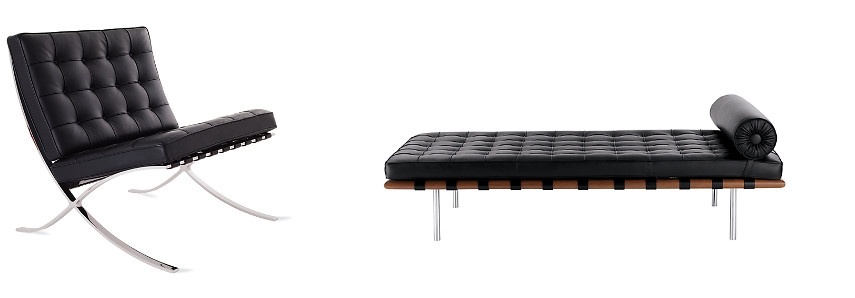
Ludwig Mies van der Rohe – Barcelona Chair (Left) / Barcelona Couch (Right)
Another thing important for his biography is his incredible work on furniture design.
The most famous piece he designed is the Barcelona chair. He made it in collaboration with Lilly Reich and made it as a complementary piece to Barcelona Pavilion. There is also a table that goes in the pair, and both are rich in modern features. Mies is also known for the Tugendhat chair and the Brno chair. The materials he used for chairs are pure leather and mixed materials of rich texture. For frames and support, Mies used chrome and designed them only anchored at one end, so they would give the notion of buoyancy. They are designed to look delicate, but they are firm and timeless, as all of his architecture work is. The furniture is made to be used by a modern man with classical taste. The classical is supported by his words God is the details, and the luxurious materials he used. The modern is in Mies’ sense of proportion, and the ability to deliver such a complicated, yet visually simple structure. The design of the chairs looks like the project for construction systems. Everything he did, he did with the same dedication. Taking care that no space is left blocked, and always emphasizing that less is more, he changed the way modern architecture exists today and made the timeless and immeasurable contribution to cities, art, science, and culture.